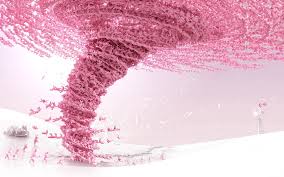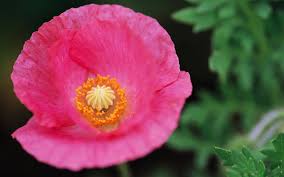Backgrounds Wallpapers Free Biography
Dhaka is the capital of Bangladesh and the principal city of Dhaka Division. Dhaka is a megacity and one of the major cities of South Asia. It is located on the banks of the Buriganga River. Dhaka, along with its metropolitan area, had a population of over 16 million in 2011, making it the largest city in Bangladesh. It is the 9th largest city in the world and also 28th among the most densely populated cities in the world. Dhaka is known as the City of Mosque and with 400,000 cycle rickshaws running on its streets every day, the city is also described as the Rickshaw Capital of the World.
Under Mughal rule in the 17th century, the city was known as Jahangir Nagar. It was a provincial capital and a centre of the worldwide muslin trade. The modern city, however, was developed chiefly under British rule in the 19th century, and became the second-largest city in Bengal after Calcutta (presently Kolkata). After the Partition of Bengal in 1905, Dhaka became the capital of the new province of Eastern Bengal and Assam but lost its status as a provincial capital again after the partition was annulled in 1911. After the partition of India in 1947, Dhaka became the administrative capital of East Pakistan, and later, in 1971, the capital of an independent Bangladesh. During the intervening period, the city witnessed widespread turmoil; this included many impositions of martial law, the declaration of Bangladesh's independence, military suppression, devastation during war, and natural calamities.
Modern Dhaka is the centre of political, cultural and economic life in Bangladesh.Although its urban infrastructure is the most developed in the country, Dhaka suffers from urban problems such as pollution and overpopulation. In recent decades, Dhaka has seen modernisation of transport, communications and public works. The city is attracting large foreign investments and greater volumes of commerce and trade. It is also experiencing an increasing influx of people from across the nation, this has reportedly made Dhaka the fastest growing city in the world.
Lālbāgh Fort constructed in the mid 17th century by Prince Mohammed Azam Shah, son of the Emperor Aurangzeb, and the Fort contains the tomb of Bibi Pari, daughter of Shaista Khan The existence of a settlement in the area that is now Dhaka dates from the 7th century. The city area was ruled by the Buddhist kingdom of Kamarupa and the Pala Empire before passing to the control of the Hindu Sena dynasty in the 9th century. The name of the city may have derived after the establishment of the Goddess Dhakeshwari's temple by Ballal Sena in the 12th century. The town itself consisted of a few market centres like Lakshmi Bazar, Shankhari Bazar, Tanti Bazar, Patuatuli, Kumartuli, Bania Nagar and Goal Nagar. After the Sena Empire, Dhaka was successively ruled by the Sultanate of Bengal as well as interruption of governors from the Delhi Sultanate before being taken over by the Mughals in 1608.The development of townships and housing has resulted into a significant growth in population came as the city was proclaimed the capital (Rajmahal) of Bengal under Mughal rule in 1608. Mughal subahdar Islam Khan was the first administrator of the city. Khan named the town "Jahangir Nagar" City of Jahangir) in honour of the Mughal emperor Jahangir, although this name was dropped soon after Jahangir's death. The main expansion of the city took place under Mughal general Shaista Khan. The city then measured 19 by 13 kilometres (12 by 8 mi), with a population of nearly one million people.[18] British East India Company in 1765 gained right to collect revenue (Diwani right) and later took over governing in 1793 when Nawabs of Bengal were forced to abdicate all their authority over Bengal, Bihar & Orissa & the city passed on to total British control. The city's population shrank dramatically during this period as the prominence of Calcutta rose,[19] but substantive development and modernisation eventually followed. A modern civic water supply system was introduced in 1874 and electricity supply launched in 1878. The Dhaka Cantonment was established near the city, serving as a base for British and Bengali soldiers.








Dhaka is the capital of Bangladesh and the principal city of Dhaka Division. Dhaka is a megacity and one of the major cities of South Asia. It is located on the banks of the Buriganga River. Dhaka, along with its metropolitan area, had a population of over 16 million in 2011, making it the largest city in Bangladesh. It is the 9th largest city in the world and also 28th among the most densely populated cities in the world. Dhaka is known as the City of Mosque and with 400,000 cycle rickshaws running on its streets every day, the city is also described as the Rickshaw Capital of the World.
Under Mughal rule in the 17th century, the city was known as Jahangir Nagar. It was a provincial capital and a centre of the worldwide muslin trade. The modern city, however, was developed chiefly under British rule in the 19th century, and became the second-largest city in Bengal after Calcutta (presently Kolkata). After the Partition of Bengal in 1905, Dhaka became the capital of the new province of Eastern Bengal and Assam but lost its status as a provincial capital again after the partition was annulled in 1911. After the partition of India in 1947, Dhaka became the administrative capital of East Pakistan, and later, in 1971, the capital of an independent Bangladesh. During the intervening period, the city witnessed widespread turmoil; this included many impositions of martial law, the declaration of Bangladesh's independence, military suppression, devastation during war, and natural calamities.
Modern Dhaka is the centre of political, cultural and economic life in Bangladesh.Although its urban infrastructure is the most developed in the country, Dhaka suffers from urban problems such as pollution and overpopulation. In recent decades, Dhaka has seen modernisation of transport, communications and public works. The city is attracting large foreign investments and greater volumes of commerce and trade. It is also experiencing an increasing influx of people from across the nation, this has reportedly made Dhaka the fastest growing city in the world.
Lālbāgh Fort constructed in the mid 17th century by Prince Mohammed Azam Shah, son of the Emperor Aurangzeb, and the Fort contains the tomb of Bibi Pari, daughter of Shaista Khan The existence of a settlement in the area that is now Dhaka dates from the 7th century. The city area was ruled by the Buddhist kingdom of Kamarupa and the Pala Empire before passing to the control of the Hindu Sena dynasty in the 9th century. The name of the city may have derived after the establishment of the Goddess Dhakeshwari's temple by Ballal Sena in the 12th century. The town itself consisted of a few market centres like Lakshmi Bazar, Shankhari Bazar, Tanti Bazar, Patuatuli, Kumartuli, Bania Nagar and Goal Nagar. After the Sena Empire, Dhaka was successively ruled by the Sultanate of Bengal as well as interruption of governors from the Delhi Sultanate before being taken over by the Mughals in 1608.The development of townships and housing has resulted into a significant growth in population came as the city was proclaimed the capital (Rajmahal) of Bengal under Mughal rule in 1608. Mughal subahdar Islam Khan was the first administrator of the city. Khan named the town "Jahangir Nagar" City of Jahangir) in honour of the Mughal emperor Jahangir, although this name was dropped soon after Jahangir's death. The main expansion of the city took place under Mughal general Shaista Khan. The city then measured 19 by 13 kilometres (12 by 8 mi), with a population of nearly one million people.[18] British East India Company in 1765 gained right to collect revenue (Diwani right) and later took over governing in 1793 when Nawabs of Bengal were forced to abdicate all their authority over Bengal, Bihar & Orissa & the city passed on to total British control. The city's population shrank dramatically during this period as the prominence of Calcutta rose,[19] but substantive development and modernisation eventually followed. A modern civic water supply system was introduced in 1874 and electricity supply launched in 1878. The Dhaka Cantonment was established near the city, serving as a base for British and Bengali soldiers.
Backgrounds Wallpapers Free

Backgrounds Wallpapers Free

Backgrounds Wallpapers Free
Backgrounds Wallpapers Free
Backgrounds Wallpapers Free
Backgrounds Wallpapers Free
Backgrounds Wallpapers Free
Backgrounds Wallpapers Free
Backgrounds Wallpapers Free
How To Get Hd And High Quality Backgrounds/Wallpapers
Free Awesome Wallpapers, Backgrounds, Textures & Stock Images (Very High Quality)
No comments:
Post a Comment